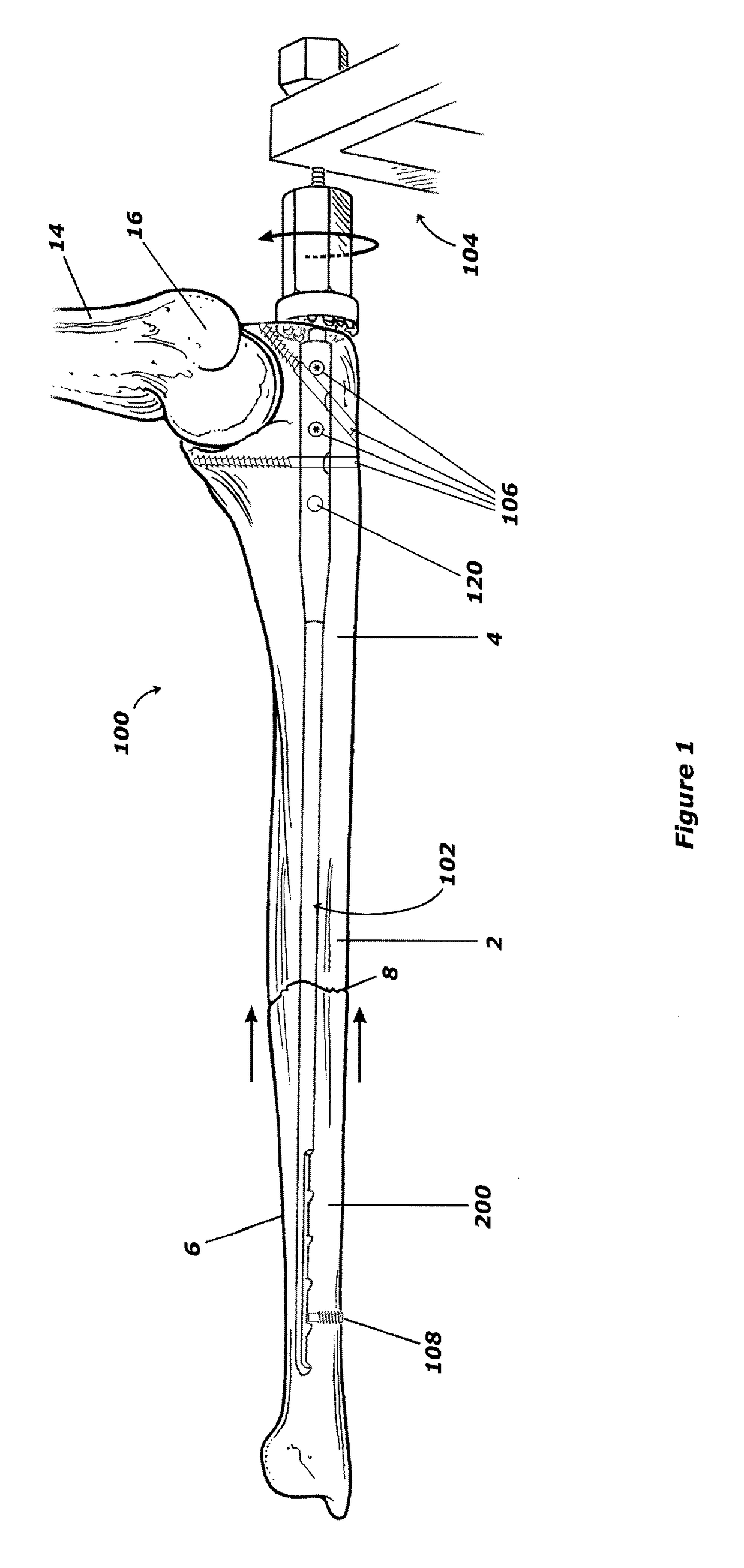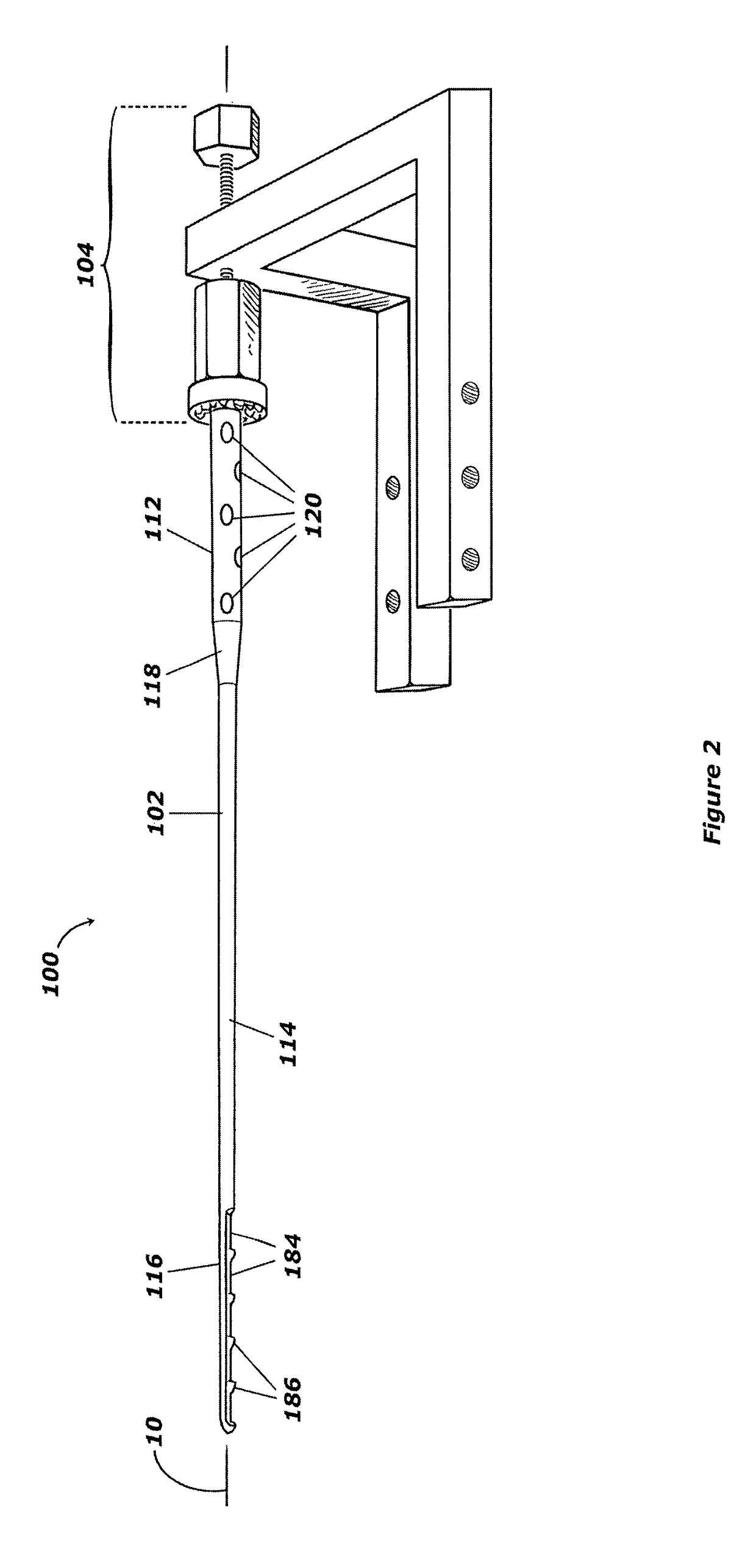Intramedullary compression rod
a technology of bone fracture and rod, which is applied in the field of devices and methods for fixing and compressing bone fractures, can solve the problems of difficult to fix the rod to the bone, and the forearm using this type of device, so as to stabilize the fracture and reduce the damage to the overlying soft tissues
- Summary
- Abstract
- Description
- Claims
- Application Information
AI Technical Summary
Benefits of technology
Problems solved by technology
Method used
Image
Examples
Embodiment Construction
[0046]Referring to FIG. 1, an ulna 2 is shown connected to a humerus 14 via an elbow joint 16. A fracture 8 is shown in the mid-shaft of the ulna 2, dividing the ulna 2 into a proximal bone portion 4 and a distal bone portion 6. A compression device 100, including an intramedullary rod 102 and rod insertion jig 104, is shown with the rod 102 disposed within the medullary canal 200 (FIGS. 4, 13) of the ulna 2. The rod 102 is fixed relative to the distal bone portion 6 using a distal screw 108, and is fixed relative to the proximal bone portion 4 using one or more proximal interlock screws 106. When used in combination with the rod insertion jig 104, the rod 102 serves to compress the proximal and distal bone portions 4, 6 of the ulna 2 together. Once the proximal and distal bone portions 4, 6 are properly mutually positioned, the rod insertion jig 104 may be disconnected from the rod 102, and the rod 102 remains within the medullary canal 200 of the ulna 2 to provide compression and ...
PUM
 Login to View More
Login to View More Abstract
Description
Claims
Application Information
 Login to View More
Login to View More - R&D
- Intellectual Property
- Life Sciences
- Materials
- Tech Scout
- Unparalleled Data Quality
- Higher Quality Content
- 60% Fewer Hallucinations
Browse by: Latest US Patents, China's latest patents, Technical Efficacy Thesaurus, Application Domain, Technology Topic, Popular Technical Reports.
© 2025 PatSnap. All rights reserved.Legal|Privacy policy|Modern Slavery Act Transparency Statement|Sitemap|About US| Contact US: help@patsnap.com



